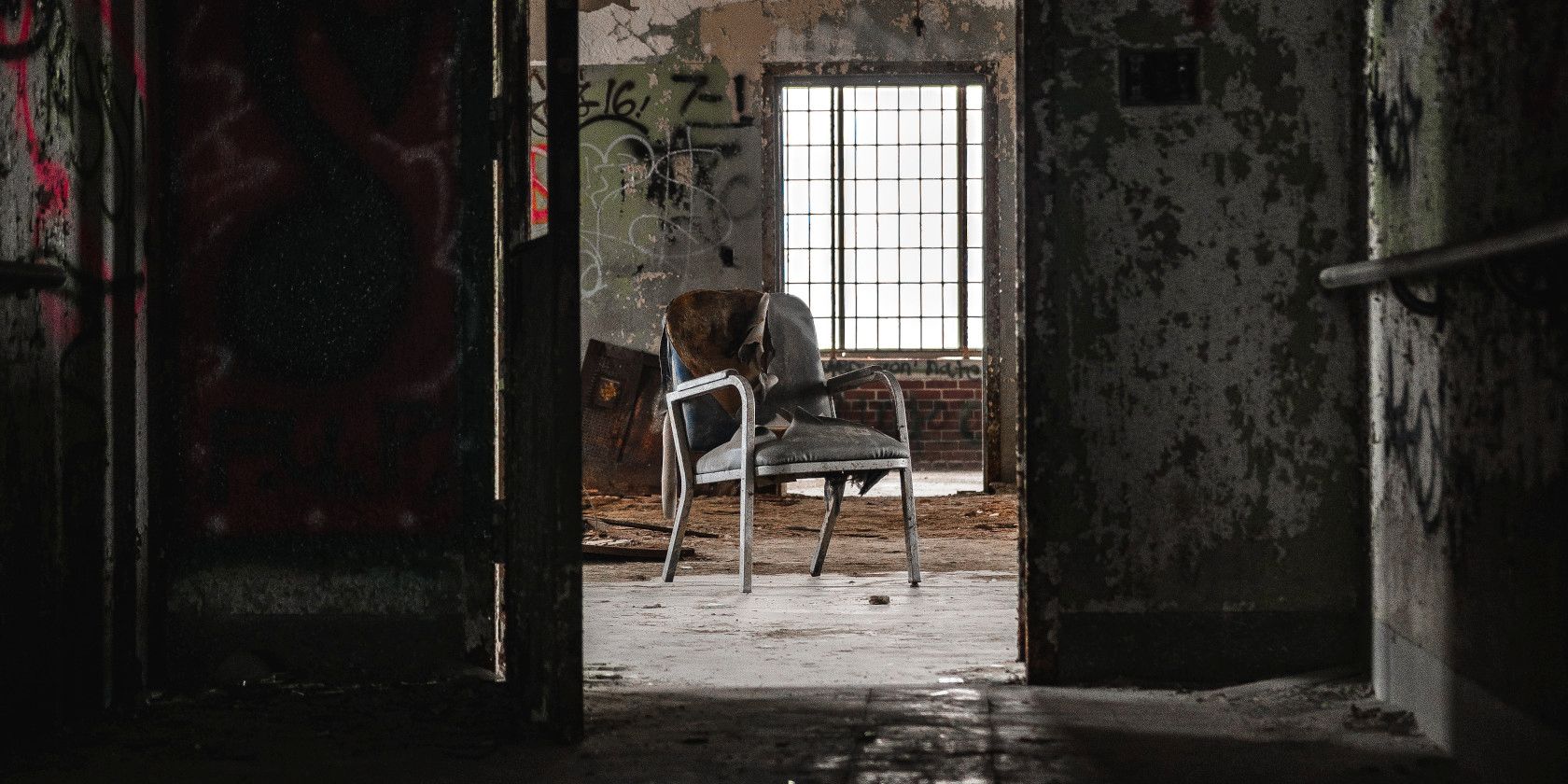Abandoned Places and Old Ghost Towns

Abandoned Places
Abandoned Places; Many people love to look for treasures. Some satisfy their needs through geocaching, while others like to visit abandoned buildings; there is something poignant about remembering things that have been lost to time and neglect. However, some of us cannot visit these places in person.
This is due to the fact that these locations are too far away or because we just don’t know where to look. Fortunately, there is an entire subculture online dedicated to documenting abandoned areas.
Popular Websites for Abandoned Places

1. Abandoned Places
First, let’s start with a very old website that documents places that have been abandoned for a long time. When we say this website is old, we mean old.
Although Abandoned Places is old and not exactly user-friendly, it’s pretty simple to use once you understand the main navigation wheel. Essentially, the entire website was designed to resemble a mechanical contraption. You can click on different gears in the central wheel to get more information about a new building.
The website also features locations from around the world, and each post includes historical information and photos of those locations where possible. One area, called The Graffiti Place, includes a description of the size of the ghost town, as well as its location along the Scheldt. The photographs that document it are detailed and worth seeing.
2. Abandoned America
Looking for a more modern website with a different purpose? Then you should visit Abandoned America, a website created by documentary filmmaker Matthew Christopher.
Over the years, Christopher has made it his mission to save the waning American Dream. On his about him page, he states that he has been fascinated by abandoned places since he was a child. Furthermore, he wants to share the stories behind these abandoned places and shine a light on the lives that have been altered by historical atrocities.
The website also makes it very clear that some location information has been withheld, as these abandoned buildings are on private property.
However, even with this factor in play, this website is still one of the most comprehensive resources on this list. Attention to detail can help you satisfy that “find abandoned places near me” urge without actually going there in person.
3. Urbex Playground
With two sections dedicated to urban and rural exploration, Urbex and Rurex, this website aims to document abandoned buildings in high and low-density areas. For every place, this website explores the team photographs and records the history behind those buildings.
They also talk about how these buildings have been abandoned today. As such, this website is a great source of inspiration and insight for writers working on a variety of different topics.
Although Urbex admits that its documentation process is sometimes intrusive (an activity we do not recommend), its meticulous documentation practices and attention to detail are to be commended.
4. Freaktrography
Are you looking for a website that is a little more daring in its way of photographing abandoned places? Then you must visit Freaktography, a website run by an urban explorer.
In the early 2010s, Freaktography began recording abandoned buildings and former ghost towns and posting these images online. The browser that runs this website has amassed a giant collection of images on the subject. He also talks about his exploits on the YouTube channel Freaktography.
Like the other sites on this list, Freaktography urges readers not to follow the photographer’s example. If you plan to document brownfields or follow in the photographer’s footsteps through a brownfields website or app, you should avoid trespassing on private property.
5. Abandoned Central
Abandoned Central is another great resource for exploring cool abandoned buildings. If you want to explore abandoned buildings with a weird side, this blog is definitely for you. Many of these places have spooky elements, like a funeral home where the bodies are left, meant to make your hair stand on end.
Other abandoned places to discover
While we have explored websites that you can use to learn more about abandoned places, there are also a variety of individual blog posts that cover the topic as well. We have compiled a list of the most relevant. Daddu has an article called The Poetry of Forgotten Places, with a photo gallery. Web Urbanist has a blog post about over 100 abandoned buildings, places, and properties.
It details a number of abandoned areas and former ghost towns. In English Russia, you can read an article rich in images titled Abandoned Trains of the Soviet Era.
It’s perfect for anyone looking to search for ancient objects other than buildings. Kathmandu & Beyond has a roundup of the abandoned places they’ve explored. Urban75 is also a section with lots of old photos detailing old trains and stations.
Virtually abandoned places from your own home
Now that you know about this collection of websites dedicated to exploring abandoned places, you can start checking out some of these websites yourself. Maybe you can even use the idea of urban exploration as a starting point for a new project you’re considering researching.
If you want to explore other places in the world, abandoned or not, you should have fun with Google Earth. It offers virtual tours that let you venture into areas you’ve never heard of, all from the comfort of your own home.
Contrary to the usual urban scene, with heavy traffic, the incessant movement of pedestrians, and crowded shops, and restaurants, these places have lost their inhabitants for various reasons, ranging from natural disasters to wars. What remains of ancient centers full of life and culture are ruins that little by little are losing the battle against time.
Abounded Places around the World:

1. Mandu, India
Mandu, also known as Mandav or Mandavgad, literally means the City of Joy. It is an ancient destroyed city located in the Madhya Pradesh region of India. Once magnificent, it lay abandoned and in ruins for over 400 years. Mandu is surrounded by 45 km of walls and parapets built with stones and waste materials, interrupted by 12 gates. There are several attractive palaces, baths, canals, and art pavilions. Rock-cut caves with charming paintings decorating the walls and ceilings are additional attractions.
2.Oradour-Sur-Glane, France
Among the countless ghost towns that exist across the world, the small French town of Oradour-sur-Glane particularly stands out, completely destroyed in one of the most terrible massacres of civilians of World War II, and the largest of France. Oradour-sur-Glane was a small French town in New Aquitaine. It was destroyed on June 10, 1944, four days after the Allies invaded Normandy. The German troops resist and exterminate all the inhabitants.
At the end of the conflict, Charles de Gaulle, President of France, decides that Oradour-sur-Glane will never be rebuilt or repopulated: the city will forever be an open-air museum. As a reminder of the dead, the ruins of the original city still stand.
3. Wharram Percy, United Kingdom
Probably founded in the 9th or 10th century. It was certainly one of the largest and best-known abandoned medieval towns in England which were deserted for 500 years. Set in the beautiful hills of the Yorkshire Wolds, it once had two spectacular stately homes and a church.
The church is a standing medieval building, but you can still see the turf-covered foundation houses, built by the noble Percy family. The town’s population declined as local residents turned to sheep farming.
It was abandoned shortly after 1500. Today the site is managed by English Heritage and is a major attraction for archaeologists and tourists. For more than 60 years, archaeologists have been developing new techniques to understand what life was like in the city.
4. Craco, Italy
Located in an area called Basilicata, the town of Craco was abandoned in 1963 due to a landslide. Craco is an ancient medieval town in Italy’s earthquake-prone region of Basilicata, about 40 kilometers inland from the Gulf of Taranto at the foot of Italy’s “boot”. The town sits high on a rocky outcrop above the surrounding hills, its architecture blending seamlessly into the landscape.
With a university, castle, church, and plazas, Craco was once a monastic center, a feudal town, and a center of education. Craco has been the setting for many movies including Saving Grace, James Bond, and The Passion of the Christ thanks to its spectacular scenery and unique atmosphere.
5. Kolmanskop, Namibia
The town of Kolmanskop has had a brief but prosperous history in the middle of the Namibian desert. In the early 1900s, after learning that their area was rich in the most valuable diamonds in the world, many German miners settled there and built a German-style village. In 1912, the region produced one million carats or 11.7% of the world’s diamond production.
The town, however, became depopulated after World War I with the decline of diamond mining and was finally abandoned in 1954. Today, the town looks particularly spooky, with sand dunes encroaching on uninhabited houses.
A museum was established in 1980 and features old mining tools and an extensive collection of photographs from the town’s glory days. Some buildings, as well as the ballroom and bowling alley, have been restored for tourists.
6. Hashima Island, Japan
Located in Nagasaki Bay, Hashima Island was created in 1887 by the Mitsubishi group. Mitsubishi has invested millions of dollars in building an island around a coal deposit off the coast of Nagasaki, Japan. Surrounded by a solid wall of breakwaters. The Japanese also call it Hashima Gunkanjima, or Battleship Island, because it looks like a battleship from above. More than 5,000 people lived in huge concrete buildings in the area. Until the country decided to close its coal mines in 1960, sealing the fate of the island since its abandonment. Today, Hashima Island has declared a UNESCO World Heritage Site in 2015 and welcomes thousands of visitors every year.
7. Pyramiden, Norway
Pyramiden is a Russian town located on Norwegian territory. It is a ghost town and the capital of the Svalbard archipelago, a group of islands located halfway between Norway and the North Pole. The city was founded in the early 20th century by Sweden. Then it was eventually sold to the Soviet Union in 1927.
The idea was that the place would provide schools, theaters, and cinemas, as well as free and quality access.
food for its inhabitants, which has worked for a long time. The project, however, came to an abrupt end in the 1990s. When the Soviet Union dissolved and the mines were closed and everyone was forced to leave town. In a former school in the city, books have been abandoned and children have lost toys. The objects and household items that remain help tell the story of Pyramiden.
8. Pripyat, Ukraine
Of all the ghost towns, Pripyat in Ukraine near the border with Belarus is certainly the most famous. If the name does not sound familiar to you, then the name Chornobyl may be more appropriate. Founded in 1970 by the Soviet government on the Ukraine border. The city of Pripyat once had more than 50,000 residents, most employed by the Chornobyl nuclear power plant.
Pripyat was completely evacuated in the following weeks, while a trail of destruction spread across Europe, and many people died as a result of the disaster. Today Chornobyl is home to the most unique wildlife sanctuaries housing a variety of animals and birds such as boar, elk, bears, beavers, deer, lynx, eagles, wolves, and others in the thick forest that now surrounds the ‘factory. The area, however, sees stunted trees growing in the area and the animals in the area have high levels of cesium-137 in their bodies what is more depressing is that despite the presence of a variety of animals in the area, for 20,000 years, this area will remain dangerous for human.
In recent years, however, scientists have pointed out that it is safe to walk in deserted streets, provided it is for limited intervals of time and keeping a distance from the most contaminated places.
Q&A
Why are places often abandoned?
It is often floods, hurricanes, tornadoes, earthquakes, or other natural disasters that force families and businesses to evacuate the area in which they live and earn their living. And in some cases when people leave for security reasons and never come back.
Why do ghost towns exist?
Ghost towns are empty neighborhoods and sometimes entire towns that were built but never inhabited. Its existence is a physical manifestation of China’s overdevelopment of real estate and its reliance on housing as an investment strategy.
Why do people like abandoned places?
Everyone is different: they like to see the unexpected in places long devoid of human habitation. From trees growing on shelves to old newspapers from the 1930s, you can never predict what you’ll find. Pure curiosity: Many people who like to visit these places do so out of pure curiosity.
Do abandoned buildings increase crime?
The number of drug, property and violent crimes is higher in blocks with abandoned residential buildings than in comparable blocks without abandoned buildings.
recommended :
- The Cheap Hotel Bookings – 4 Websites
- How To Navigate 1166 Avenue of Americas New York
- Explore Gettysburg Travel Resorts of America
- Cash America Mount Vernon Washington


